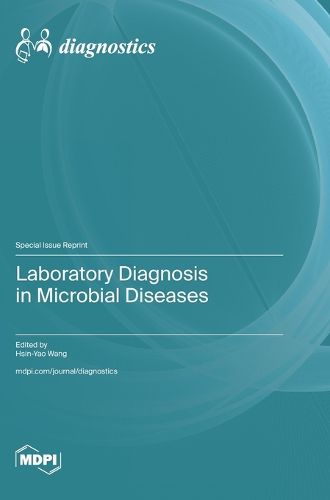Readings Newsletter
Become a Readings Member to make your shopping experience even easier.
Sign in or sign up for free!
You’re not far away from qualifying for FREE standard shipping within Australia
You’ve qualified for FREE standard shipping within Australia
The cart is loading…






This title is printed to order. This book may have been self-published. If so, we cannot guarantee the quality of the content. In the main most books will have gone through the editing process however some may not. We therefore suggest that you be aware of this before ordering this book. If in doubt check either the author or publisher’s details as we are unable to accept any returns unless they are faulty. Please contact us if you have any questions.
Currently, the diagnosis of infectious diseases largely depends on conventional phenotypic tools. However, typically, these tools are heavily based on culturing and are susceptible to bias. Discussing the unmet needs, this Special Issue contributes 11 studies to the study community. The papers in this issue present a diverse array of investigations spanning infectious diseases, microbiome analysis, and diagnostic methodologies. From identifying distinct microbial ecosystems in gallstone patients and evaluating diagnostic methods for latent tuberculosis in hemodialysis patients to assessing the performance of serological assays for Chikungunya virus, the issue covers a broad spectrum of topics. Additionally, the studies delve into the prevalence and characteristics of parasitic infections among school children, the diagnostic challenges in lower respiratory tract infections, and the utility of dried blood spots for serological studies of viral infections. The issue also explores advanced techniques in the detection of Mycobacterium tuberculosis, multiplex PCR assays for neuromeningeal infections, and enzyme immunoassays for monitoring diphtheria toxin production. In addition, a critical review is included that outlines proteomic perspectives on antibiotic resistance in ESKAPE pathogens. There is a need for innovative diagnostic approaches, especially proteomic tools, in the face of emerging pandemics. Overall, this Special Issue offers a comprehensive overview of cutting-edge research in microbiology, infectious diseases, and diagnostic methodologies, contributing valuable insights to the scientific community.
$9.00 standard shipping within Australia
FREE standard shipping within Australia for orders over $100.00
Express & International shipping calculated at checkout
This title is printed to order. This book may have been self-published. If so, we cannot guarantee the quality of the content. In the main most books will have gone through the editing process however some may not. We therefore suggest that you be aware of this before ordering this book. If in doubt check either the author or publisher’s details as we are unable to accept any returns unless they are faulty. Please contact us if you have any questions.
Currently, the diagnosis of infectious diseases largely depends on conventional phenotypic tools. However, typically, these tools are heavily based on culturing and are susceptible to bias. Discussing the unmet needs, this Special Issue contributes 11 studies to the study community. The papers in this issue present a diverse array of investigations spanning infectious diseases, microbiome analysis, and diagnostic methodologies. From identifying distinct microbial ecosystems in gallstone patients and evaluating diagnostic methods for latent tuberculosis in hemodialysis patients to assessing the performance of serological assays for Chikungunya virus, the issue covers a broad spectrum of topics. Additionally, the studies delve into the prevalence and characteristics of parasitic infections among school children, the diagnostic challenges in lower respiratory tract infections, and the utility of dried blood spots for serological studies of viral infections. The issue also explores advanced techniques in the detection of Mycobacterium tuberculosis, multiplex PCR assays for neuromeningeal infections, and enzyme immunoassays for monitoring diphtheria toxin production. In addition, a critical review is included that outlines proteomic perspectives on antibiotic resistance in ESKAPE pathogens. There is a need for innovative diagnostic approaches, especially proteomic tools, in the face of emerging pandemics. Overall, this Special Issue offers a comprehensive overview of cutting-edge research in microbiology, infectious diseases, and diagnostic methodologies, contributing valuable insights to the scientific community.